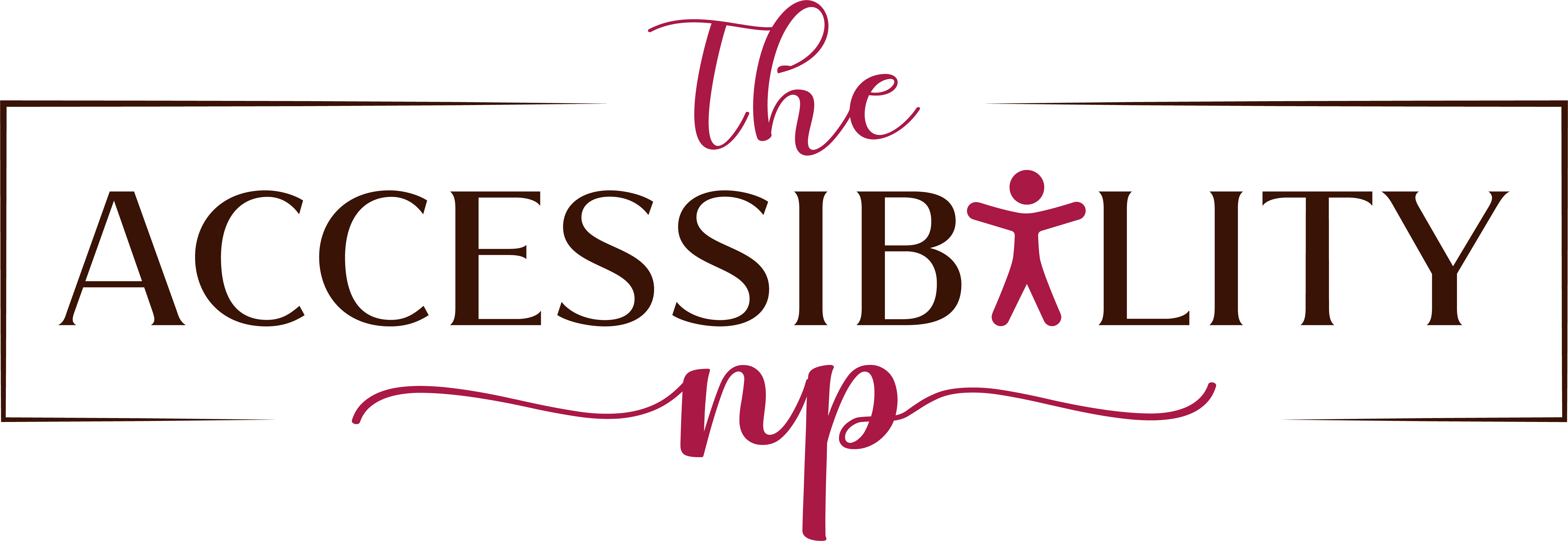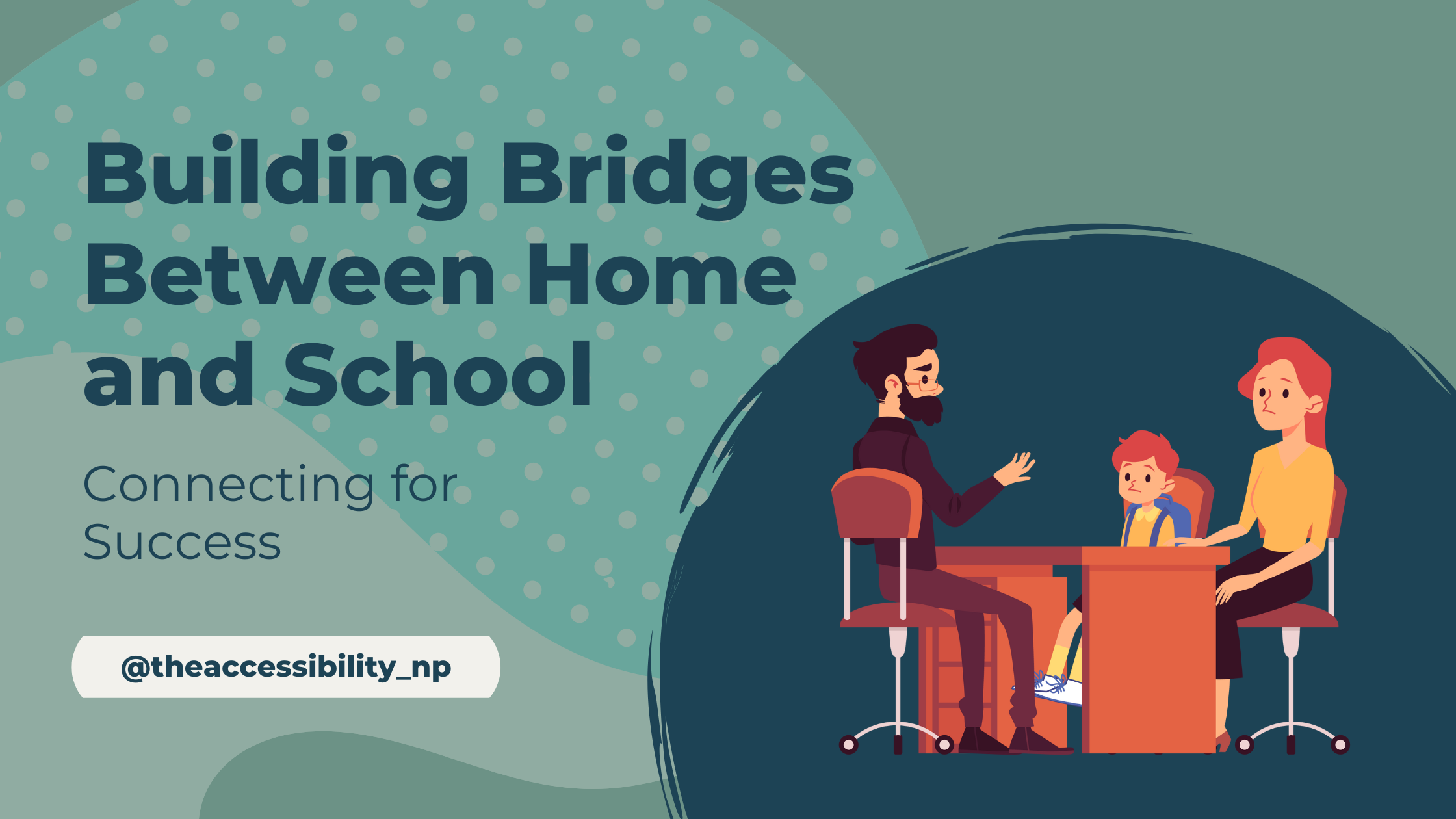Effective parent-teacher communication is fundamental to a student’s success. When parents and teachers maintain open lines of communication, they create a supportive environment where students can excel academically, emotionally, and socially. As the education system continues to embrace inclusivity and accessibility, fostering strong communication becomes even more crucial, particularly for disabled students who may require additional support. This blog explores the importance of parent-teacher communication, provides strategies for improvement, and offers solutions to overcome common barriers.
The Importance of Parent-Teacher Communication
Strong communication between parents and teachers is essential for several reasons. First, it fosters a collaborative partnership that is crucial for the student’s learning journey. When parents and teachers communicate effectively, they can work together to address challenges, celebrate successes, and provide the necessary support tailored to the student’s unique needs. This collaboration is particularly important for disabled students, as it ensures that their specific requirements are met consistently both at home and in school.
Second, effective communication helps build trust between parents and educators. When parents feel informed and involved in their child’s education, they are more likely to trust the school and its teachers. This trust fosters a positive relationship, encouraging greater parental engagement and support, which in turn benefits the student.
Finally, strong communication allows for timely intervention when issues arise. Whether it’s addressing academic difficulties, behavioral concerns, or emotional challenges, open communication channels enable early identification and resolution, preventing small issues from escalating into larger problems.
Strategies for Effective Communication
Building effective communication between parents and teachers requires deliberate effort and the use of various strategies. These strategies focus on creating open, respectful, and consistent communication channels.
- Establish Clear Communication Channels
One of the first steps in improving parent-teacher communication is establishing clear and consistent channels. Schools and teachers should offer multiple ways for parents to communicate, such as email, phone calls, and online platforms. Setting expectations early in the school year about how and when communication will take place is essential. For instance, teachers might inform parents that they check and respond to emails within 24 hours during weekdays or prefer scheduling phone calls during specific hours.
For parents of disabled students, consider using communication tools that facilitate detailed and nuanced conversations, such as video calls or in-person meetings. Additionally, it’s crucial to ensure that communication is accessible to all parents, regardless of language or technological proficiency. Providing translated materials or offering support to parents who may need assistance navigating digital platforms can significantly enhance communication.
- Create a Welcoming Environment
Creating a welcoming environment where parents feel comfortable communicating with teachers is crucial. This begins with the first interaction. Whether it’s during a back-to-school night or a parent-teacher conference, teachers should strive to be approachable, understanding, and empathetic. Small gestures, such as greeting parents warmly, using their preferred names and pronouns, and showing genuine interest in their child’s well-being, can go a long way in building a positive relationship.
For parents of disabled students, it’s important to create a space where they feel their concerns and insights are valued. Teachers should take the time to listen to parents, especially when they share information about their child’s needs, strengths, and challenges. This approach not only builds trust but also provides the teacher with valuable insights that can enhance the student’s educational experience.
- Regularly Update Parents on Student Progress
One of the most effective ways to maintain strong communication is to regularly update parents on their child’s progress. These updates can be formal, such as through report cards and parent-teacher conferences, or informal, such as through quick emails or notes sent home. For students who require additional support, more frequent communication may be necessary. In these cases, teachers might consider setting up a communication log or using an online platform where both the teacher and parents can share updates, concerns, and feedback.
It’s also important to share positive news, not just challenges. Celebrating a student’s achievements, no matter how small, helps build a positive relationship between the parent and teacher. It also reinforces the idea that communication is not just about addressing problems but also about recognizing and supporting the student’s growth.
- Involve Parents in the Educational Process
Involving parents in the educational process is a powerful way to strengthen communication. This can be done by encouraging parents to participate in school events, volunteer in the classroom, or join parent-teacher organizations. Additionally, teachers can invite parents to contribute to classroom activities by sharing their expertise or cultural background, which enriches the learning experience for all students.
For parents of disabled students, involving them in the educational process might include inviting them to participate in Individualized Education Program (IEP) meetings or other planning sessions. This involvement ensures that parents have a say in their child’s education and that the support provided aligns with the student’s needs.
- Use Technology to Enhance Communication
Technology has made it easier than ever to maintain regular communication between parents and teachers. Many schools now use online platforms that allow parents to access their child’s grades, attendance records, and assignments. These platforms often include messaging systems that enable quick and easy communication between parents and teachers.
However, it’s important to remember that not all parents have equal access to technology. Teachers should be mindful of this and offer alternative communication methods for parents who may not be comfortable using online platforms. Additionally, teachers should ensure that any technology used is accessible to parents with disabilities, such as providing captions for videos or offering text-based alternatives for visually impaired parents.
Overcoming Common Barriers to Communication
Despite the best efforts of parents and teachers, there are often barriers that can hinder effective communication. These barriers can stem from various sources, including time constraints, cultural differences, and misunderstandings. Identifying and addressing these barriers is key to building a strong partnership between parents and teachers.
- Time Constraints
One of the most common barriers to effective communication is time constraints. Both parents and teachers often have busy schedules, which can make it challenging to find time for meaningful conversations. To overcome this barrier, it’s essential to prioritize communication and be flexible in finding times that work for both parties. This might mean scheduling calls during evenings or using asynchronous communication methods, such as emails or recorded video messages, that allow parents and teachers to communicate on their own time.
For parents of disabled students, time constraints can be particularly challenging, especially if they need to attend multiple meetings or coordinate with various service providers. In these cases, teachers should work with parents to create a communication plan that takes into account their unique needs and availability.
- Cultural and Language Differences
Cultural and language differences can also pose barriers to effective communication. Parents from diverse cultural backgrounds may have different expectations about the role of teachers and how they should communicate with the school. Additionally, language barriers can make it difficult for parents to fully understand their child’s educational progress or to express their concerns.
To overcome these barriers, schools should strive to be culturally responsive in their communication practices. This might include providing translation services, offering bilingual staff members, or creating materials that are culturally relevant and accessible. Teachers should also be aware of their own cultural biases and take the time to learn about the cultural backgrounds of their students and families. This understanding can help bridge the gap and ensure that communication is respectful and effective.
- Misunderstandings and Assumptions
Misunderstandings and assumptions can quickly derail effective communication. For example, a parent might assume that the teacher is aware of a specific issue with their child, while the teacher might assume that the parent is satisfied with their child’s progress. These assumptions can lead to frustration and a breakdown in communication.
To avoid misunderstandings, it’s important to be clear and transparent in all communications. Teachers should take the time to explain their expectations, provide detailed feedback, and ask parents for their input. Similarly, parents should feel comfortable asking questions, seeking clarification, and sharing their concerns. By fostering an open and honest dialogue, both parties can work together more effectively.
Building a Strong Partnership
Effective parent-teacher communication is about more than just exchanging information; it’s about building a partnership that supports the student’s overall well-being. This partnership is especially important for disabled students, as it ensures that their unique needs are met and that they receive the support they need to succeed.
- Collaborate on Goals
One way to build a strong partnership is to collaborate on setting goals for the student. These goals should be realistic, achievable, and tailored to the student’s individual needs. By working together to set goals, parents and teachers can ensure that they are both working towards the same outcomes and that the support provided at home and school is aligned.
For students with IEPs, this collaboration is particularly important. Teachers should involve parents in the goal-setting process and ensure that they have a clear understanding of what the goals are and how they will be measured. This collaboration helps ensure that the student’s educational experience is consistent and that they have the best possible chance of achieving their goals.
- Share Responsibility
A strong partnership is built on shared responsibility. Both parents and teachers have a role to play in supporting the student’s success, and it’s important that both parties recognize and embrace their responsibilities. For teachers, this means providing high-quality instruction, being responsive to parents’ concerns, and offering the support needed to help the student succeed. For parents, this means being engaged in their child’s education, reinforcing learning at home, and communicating openly with the teacher.
Sharing responsibility also means recognizing that both parties bring valuable insights and expertise to the table. Teachers have the professional knowledge and experience to support the student’s academic growth, while parents have a deep understanding of their child’s strengths, needs, and personality. By working together, parents and teachers can create a holistic support system that addresses all aspects of the student’s development.
- Celebrate Successes Together
Celebrating successes together is a key component of a strong parent-teacher partnership. Acknowledging a student’s achievements, whether academic, social, or personal, reinforces positive behavior and boosts the student’s confidence. It also strengthens the bond between parents and teachers, showing that both are invested in the student’s growth and well-being.
For disabled students, celebrating milestones—no matter how small—can be especially impactful. These celebrations not only motivate the student but also demonstrate to parents that their child’s progress is valued and recognized by the school. Whether through a quick note home, a phone call, or a small classroom celebration, taking the time to acknowledge a student’s hard work and achievements helps build a positive and supportive educational environment.
Wrapping Up
In conclusion, effective parent-teacher communication is vital for student success. By establishing clear communication channels, creating a welcoming environment, regularly updating parents, involving them in the educational process, and using technology thoughtfully, educators can foster strong, positive relationships with parents. Overcoming common barriers such as time constraints, cultural differences, and misunderstandings requires ongoing effort and a commitment to open, honest dialogue.
For disabled students, these communication strategies are particularly crucial, as they ensure that the student’s unique needs are consistently met across all environments. By working together—celebrating successes, collaborating on goals, and sharing responsibility—parents and teachers can create a supportive and inclusive educational experience that allows every student to thrive.
Ultimately, the success of parent-teacher communication lies in recognizing that both parties have the same goal: the well-being and success of the student. When parents and teachers collaborate effectively, they create a powerful team that can overcome challenges, support the student’s development, and celebrate the many successes along the way.
Until next Monday, stay connected and keep advocating!

